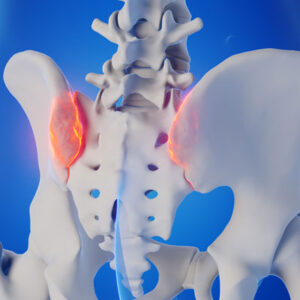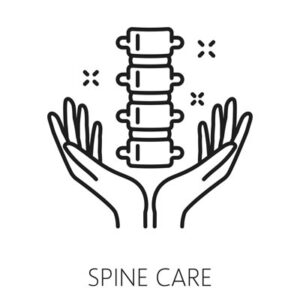Are you looking for practical ways to support your spine? Here are 30 tips for spine health prevention & wellness that you can start today. As a chiropractor, I emphasize simple daily habits like maintaining good posture, stretching regularly, and staying active to keep your spine strong. Incorporating core-strengthening exercises and being mindful of lifting techniques can also prevent injury. Hydration, a balanced diet, and ergonomic adjustments in your workspace are essential for long-term spinal health.
These small changes can make a big difference in preventing discomfort and promoting overall wellness. Let’s dive into these helpful tips to protect your spine!
The Backbone of Well-being: Why Spinal Health Matters
Let’s face it: our spine is the unsung hero of our body. It’s like the backstage crew at a rock concert – you don’t see it, but the show can’t go on without it. A healthy spine is crucial for overall well-being, affecting mobility and mood.
Think of your spine as the highway of your nervous system. When it’s in good shape, messages zoom from your brain to the rest of your body without traffic jams. But when it’s neglected? Well, that’s when the backups begin, potentially leading to:
- Chronic pain (the unwelcome houseguest that overstays its welcome)
- Limited mobility (suddenly, tying your shoelaces becomes an Olympic sport)
- Decreased energy levels (hello, afternoon slump!)
- Even depression (because a grumpy spine can lead to a grumpy you)
Now that we’ve established why spine health is a big deal let’s dive into our 30 tips to keep your backbone happy and healthy!
Daily Habits: Small Changes, Big Impact
Exercise and Movement: Get that Spine Grooving!
1. Exercise regularly: Your spine loves a good workout. Aim for at least 30 minutes of moderate exercise most days of the week.
2. Warm up and cool down properly: Think of it as a spa day for your spine. A proper warm-up and cool-down can prevent injuries and improve flexibility.
3. Strengthen your core: A strong core is like a bodyguard for your spine. Planks, bridges, and crunches are great options.
4. Strengthen your lower body: Strong legs take pressure off your spine. Squats and lunges are your spine’s best friends.
5. Stretch daily: Keep your spine lumbar with daily stretches. It’s like yoga for your vertebrae!
6. Loosen up your spine and hips: Tight hips can lead to back pain. Hip openers and gentle twists can work wonders.
7. Take walking breaks: Sitting is the new smoking for your spine. Take regular strolls to keep things moving.
Posture and Alignment: Stand Tall, Stand Proud
8. Practice good posture: Imagine a string pulling you up from the crown of your head. Shoulders back, chin tucked – you’ve got this!
9. Maintain a neutral spine when sitting: Your lower back should have a slight curve. No slouching allowed!
10. Take regular breaks from sitting: Set a timer to remind you to stand up and stretch every hour.
11. Avoid prolonged standing: If you must stand for long periods, shift your weight from foot to foot or use a footrest.
Healthy Lifestyle: Treat Your Spine Right
12. Maintain a healthy weight: Extra pounds stress your spine. Keep your weight in check to keep your back happy.
13. Eat a balanced diet: Your spine needs nutrients too! A diet rich in calcium, vitamin D, and lean proteins can help maintain bone health.
14. Hydrate regularly: Think of water as WD-40 for your spine. It keeps those discs nice and plump.
15. Avoid smoking and excessive alcohol consumption: Both can lead to bone loss and increased risk of fractures. Your spine prefers you smoke-free and sober!
Preventive Measures: An Ounce of Prevention…
Lifting and Carrying: Use Your Head (and Legs)
16. Lift with your legs, not your back: Your legs are more muscular than you think. Bend at the knees and keep the object close to your body.
17. Wear your backpack properly: Over both shoulders, please! Your spine isn’t a fan of the one-shoulder sling.
18. Avoid carrying heavy bags on one shoulder: Distribute the weight evenly or use a rolling suitcase. Your spine appreciates balance.
Ergonomics: Your Spine’s Home Away From Home
19. Improve workspace ergonomics: Your desk should be set up like a throne for your spine. Adjust your chair, monitor, and keyboard for optimal alignment.
20. Use a comfortable mattress and pillow: You spend a third of your life in bed. Make sure it’s supporting your spine correctly.
21. Wear supportive shoes: High heels might look fabulous, but your spine prefers sensible shoes. Save the stilettos for special occasions.
Stress Management: Keep Calm and Carry On
22. Reduce stress through relaxation techniques: Stress can cause muscle tension, leading to back pain. Try meditation, deep breathing, or yoga.
23. Get enough sleep: Your spine needs its beauty rest, too. Aim for 7-9 hours of quality sleep each night.
Additional Tips: The Cherry on Top
Professional Care: Sometimes You Need an Expert
24. Get regular check-ups: Just like your car needs regular tune-ups, so does your spine. Schedule regular visits with a healthcare professional.
25. Consider massage or physical therapy: These can help alleviate pain and improve mobility. It’s like a spa day for your spine!
26. Consult a specialist for specific conditions: If you’re experiencing chronic pain or have a particular condition like sciatica or spinal stenosis, don’t hesitate to see a specialist.
Specific Conditions and Populations: One Size Doesn’t Fit All
Spinal Health for Different Needs
27. Address herniated discs: If you have a disc, work with your healthcare provider to develop a treatment plan. This might include physical therapy, medication, or, in some cases, surgery.
28. Manage sciatica: Sciatica can be a real pain in the… well, you know. Stretching, physical therapy, and sometimes medication can help manage symptoms.
29. Cope with spinal stenosis: This condition can cause numbness and weakness. Treatment may include physical therapy, medication, or, in severe cases, surgery.
See more: The Benefits of Chiropractic Care for Everyday Wellness
Spinal Health for the Young and Expectant
30. Encourage physical activity in children and adolescents: Start ’em young! Encourage kids to be active and maintain good posture. It’s like investing in a 401(k) for their spine.
Bonus Tip for Expectant Mothers: Support your back during pregnancy. Use supportive pillows, practice good posture, and consider prenatal yoga or swimming.
Remember, at SpineWorks Chiropractic, we’re committed to helping you maintain optimal spinal health. These tips are a great start, but if you’re experiencing persistent back pain or have concerns about your spinal health, don’t hesitate to reach out. We’re here to support your journey to a healthier, happier spine. After all, a healthy spine is the backbone of a great life!
Frequently Asked Questions
How can poor spinal health affect my overall well-being?
Poor spinal health can lead to various health problems, including chronic pain, limited mobility, decreased energy levels, and even depression. It can also impact your quality of life and daily activities.
What are some common causes of spinal pain?
Common causes of spinal pain include poor posture, muscle strain, herniated discs, arthritis, and spinal stenosis.
Are there any specific exercises that can help strengthen my spine?
Yes, exercises like planks, bridges, and swimming can help strengthen the muscles supporting your spine. Consult with a healthcare professional for personalized recommendations.
How can I prevent back pain while working at a desk?
Maintain good posture, take regular breaks to stretch and move around, and ensure your workspace is ergonomically set up. Use a supportive chair and adjust your monitor and keyboard to a comfortable height.
What is the difference between a herniated disc and sciatica?
A herniated disc occurs when the soft inner part of a spinal disc bulges or ruptures. Sciatica is a condition caused by sciatic nerve compression, often due to a herniated disc.





